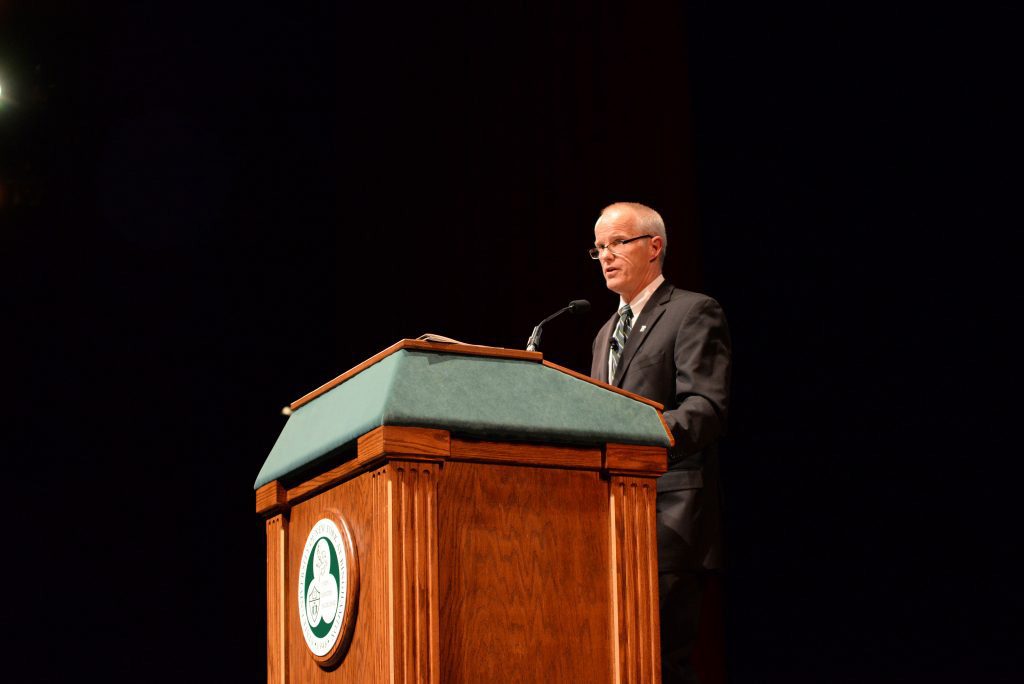
Binghamton University President Harvey Stenger highlighted the next steps of his Road Map initiative on Thursday during his annual State of the University address.
University faculty, staff and community leaders congregated in the Anderson Center’s Osterhout Theater to hear the president’s remarks on the newest phase of strategic investment. Many of the attendees have worked with Stenger to execute his goals for the region, including Assemblywoman Donna Lupardo, State Senator Fred Akshar and Broome County Executive Jason Garnar.
Stenger’s speech centered on the four new University initiatives, identified by the Road Map Steering Committee in June, that the administration will prioritize in the Road Map Renewal phase of its strategic plan.
The four University initiatives include developing a College of Nursing and Health Sciences, expanding data-driven research and practice, establishing a Health Sciences Core Facility and increasing faculty diversity through postdoctoral fellowships. Each initiative is chaired and managed by University faculty.
According to Stenger, the University is most successful when it focuses on diversity and cooperation.
“If you’re collaborating, usually it means you’re collaborating with someone who brings something new to the table, whether it’s demography or intellect,” Stenger said.
In addition to the four priorities, there are 10 Divisional initiatives, led by the University’s vice presidents and categorized by “program” and “facility.” These include renovating Glenn G. Bartle Library, strengthening recruitment and retention, creating a digital commons and innovation lab and establishing a High-Impact Learning Innovations Council.
High-impact learning has been emphasized throughout the history of the strategic plan, and Stenger said that the Johnson City campus will provide new opportunities for nursing and health science students.
“High-impact learning includes clinical placements,” Stenger said, mentioning the prospect of on-site clinical facilities. “We also think about the community outreach that we’ll have in Johnson City by having a couple of anchor buildings over there.”
Much of the address focused on the expansion of the Johnson City complex, with initiatives toward providing advanced instrumentation for research, attracting high-quality faculty and fostering partnership with local hospitals and members of the health care industry.
A third building will also be added to the health sciences complex, with $15 million of state funding. Akshar, who serves Broome and Tioga counties, said that he helped to secure the funding for this research and development facility in the last legislative session.
“You’re seeing massive growth off of this campus, which I think is incredibly important and is happening because of the vision of the people who are on campus here,” Akshar said.
Throughout the address, Stenger emphasized the economic growth that new campus will spur in Johnson City. Stacey Duncan, deputy director of community and economic development at The Agency, Broome County’s industrial development bureau, said partnerships with the University are critical to building a strong economy.
“From an economic development standpoint, we certainly think that the University’s growth is a continued driver and anchor of everything we’re trying to accomplish — from a community revitalization, business retention and expansion and, even more recently, from a workforce development perspective,” Duncan said.
The University is currently establishing teams to develop and execute the newest phase of initiatives, which Stenger said would be rolled out over the next few years.


